![]()
![]()
![]()
Use LEFT and RIGHT arrow keys to navigate between flashcards;
Use UP and DOWN arrow keys to flip the card;
H to show hint;
A reads text to speech;
63 Cards in this Set
- Front
- Back
|
Debridement
|
The removal of dead or damaged tissue, foreign objects, and cellular debris from a wound
|
|
|
Deep tissue injury
|
A purple or maroon localized area of discolored intact skin or blood-filled blister resulting from damage to underlying soft tissue from pressure and/or shear
|
|
|
Erythema
|
A redness or inflammation of the skin or mucous membranes that is a result of dilation and congestion of superficial capillaries
|
|
|
Example of erythema
|
Sunburn
|
|
|
Eschar
|
A thick layer or dead, dry tissue that covers a pressure ulcer or thermal burn
|
|
|
Exudate
|
The discharge from small pores or breaks in cell membrane
|
|
|
Ischemia
|
A decreased blood supply to a body part (skin) or an organ (heart)
|
|
|
Maceration
|
To soften or break down
|
|
|
Necrosis
|
Localized tissue death
|
|
|
Pressure ulcer
|
An inflammation, sore, or ulcer in the skin over a bony prominence, developing as a result of prolonged, unrelieved pressure
|
|
|
Reactive hyperemia
|
The return of blood to an area of tissue upon the release of externally applied pressure
|
|
|
Shear
|
Applied force or pressure exerted against the surface and layers of the skin as tissues slide in opposite but parallel planes
|
|
|
Slough
|
Shedding of dead tissue cells
|
|
|
Topical agents
|
Drugs or treatments applied to the body surface
|
|
|
Undermining
|
A condition of a wound in which the loss of underlying tissue is greater than the loss of skin
|
|
|
Dead space
|
A cavity remaining in a wound
|
|
|
Dehiscience
|
A separation of a wound's edges revealing underlying tissue
|
|
|
Epithelialization
|
The stage of wound healing by which epidermal cells migrate (move) over the wounds surface to close the top or "resurface" the wound
|
|
|
Evisceration
|
The protrusion of visceral organs through a surgical wound
|
|
|
Excoriation
|
An injury to the skins surface caused by abrasion
|
|
|
Granulation
|
The presence of red, granular, moist tissue that appears during the healing of open wounds
|
|
|
Hydrocolloid
|
A substance that forms a gel in the presence of water, examples of which are used in surgical dressing and in various industrial applications
|
|
|
Hydrogel
|
A gel in which the liquid component is water
|
|
|
Negative Pressure Wound Therapy (NPWT)
|
Therapeutic technique using a vacuum dressing to promote healing in acute or chronic wounds and enhance healing of first and second degree burns
|
|
|
Neovascularization
|
Formation of functional microvascular networks with red blood cell perfusion
|
|
|
Occlusive dressing
|
air-tight / water-tight trauma dressing
|
|
|
Pressure dressing
|
Dressing by which pressure is exerted on the area covered to prevent the collection of fluids in the underlying tissue
|
|
|
Primary dressing
|
Applied directly on the wound
|
|
|
Secondary dressing
|
Applied over the primary dressing
|
|
|
Compress
|
A pad of absorbent material pressed onto part of the body to relieve inflammation or stop bleeding
|
|
|
Conduction
|
The process by which heat or electricity is directly transmitted through a substance when there is a difference of temperature or of electrical potential between adjoining regions, without movement
|
|
|
Cryotherapy
|
The use of extreme cold in surgery or other medical therapy
|
|
|
Evaporation
|
A change from liquid form to gas form
|
|
|
Insulator
|
A substance that does not readily allow the passage of heat or sound
|
|
|
Neuropathy
|
Disease or dysfunction of one or more peripheral nerves, typically causing numbness or weakness
|
|
|
Piloerection
|
Involuntary erection or bristling of hairs due to a sympathetic reflex usually triggered by cold, shock, or fright or due to a sympathomimetic agent
|
|
|
Sitz bath
|
A bath in which only the buttocks and hips are immersed in water
|
|
|
Vasoconstriction
|
The constriction of which blood vessels, which increases blood pressure
|
|
|
Vasodilation
|
Dilation of blood vessels, which decreases blood pressure
|
|
|
Pressure ulcers also inaccurately called
|
Decubitis ulcers, pressure sores, or bed sores
|
|
|
Where do pressure ulcers occur?
|
On areas of skin subjected to pressure; bony or nonbony
|
|
|
When assessing a pressure ulcer with a PUSH tool, when will the nurse measure exudate?
|
After removing a dressing and before topical agent
|
|
|
Prevention of pressure ulcers requires
|
Early identification of at-risk patients and implementation of prevention strategies
|
|
|
What to look for with pressure ulcers
|
Redness, dryness, wetness, edema, heat, color, enduration (can't see it but you can feel it)
|
|
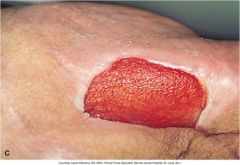
|
Stage 3 pressure ulcer
|
|
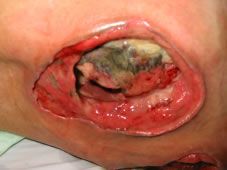
|
Stage 4 pressure ulcer
|
|
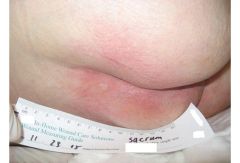
|
Stage 1 pressure ulcer
|
|
|
Serous wound drainage
|
Clear, watery plasma
|
|
|
Purulent wound drainage
|
Thick yellow, green, tan, or brown
|
|
|
Serosanguieous wound drainage
|
Pale, red, and watery: mixture of serous and sanguineous
|
|
|
Sanguineous wound drainage
|
Bright red: indicates active bleeding
|
|
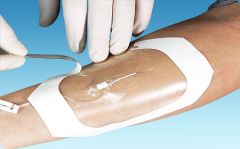
|
Transparent dressing
|
|
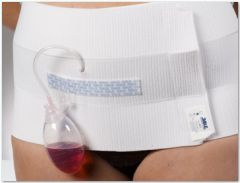
|
Abdominal binder
|
|
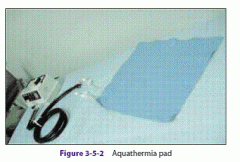
|
Aquathermia pad
|
|
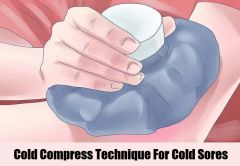
|
Cold compress application
|
|
|
Factors that delay wound healing in an older adult
|
Aging affects all phases of wound healing. The most significant change includes a diminished inflammatory response
|
|
|
Factors that delay wound healing in an obese patient
|
Fatty subcutaneous tissue is less vascular
|
|
|
Factors that delay wound healing in a diabetes patient
|
Vascular changes reduce blood flow to peripheral tissues; leukocyte malfunction results from hyperglycemia, resulting in high risk for infection
|
|
|
Factors that delay wound healing in compromised circulation
|
Vascular changes decrease the delivery of oxygen and nutrients
|
|
|
Factors that delay wound healing in patients with malnutrition
|
Inadequate nutrition slows healing because of lack of nutrients needed for wound healing
|
|
|
Factors that delay wound healing in patients with immunosuppressive therapy
|
Immunosuppression decreases inflammatory response and collagen synthesis
|
|
|
Factors that delay wound healing in chemotherapy patients
|
Chemotherapy interferes with leukocyte production and immune response
|
|
|
Factors that delay wound healing in patients with high levels of stress
|
Increased cortisol levels reduce number of lymphocytes and decrease inflammatory response
|

